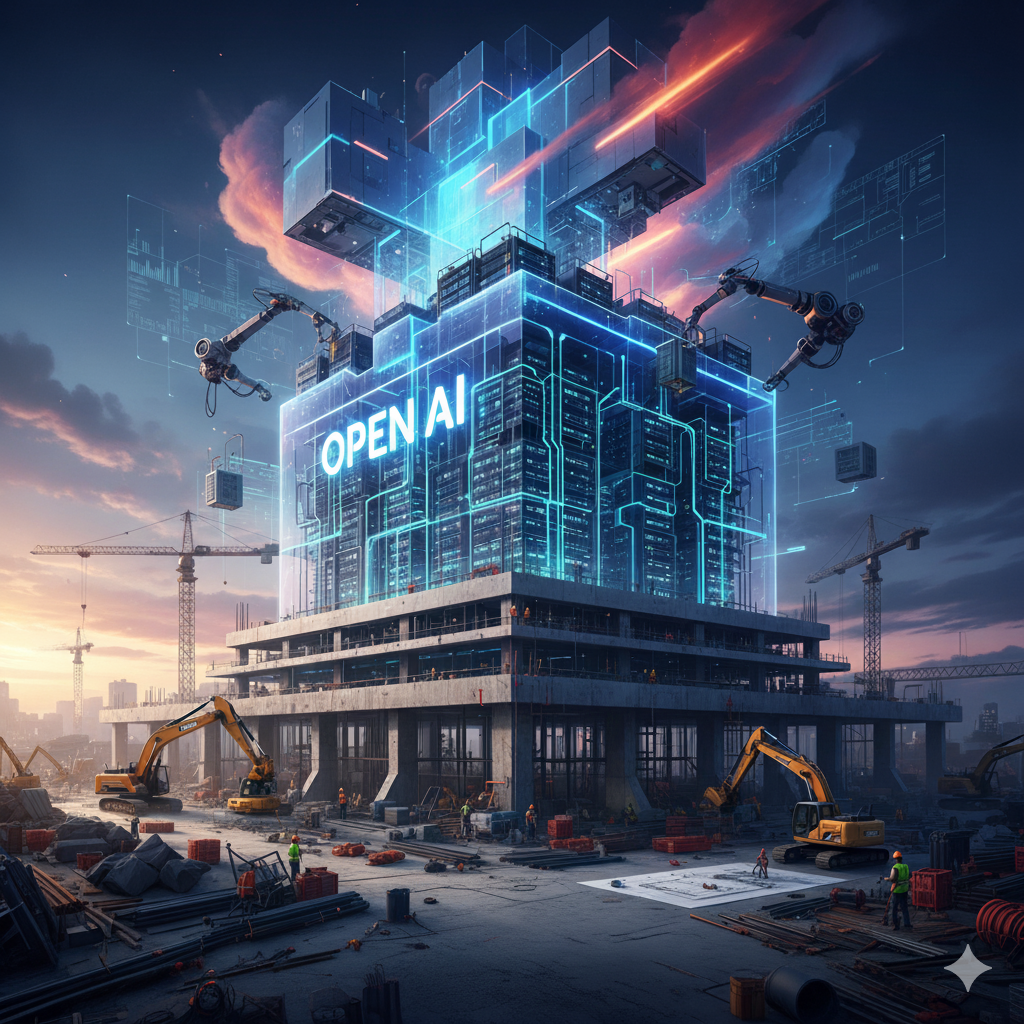
OpenAI has taken a break from writing poems and paralegal briefs to announce something rather more concrete: five new data centres across the United States. The $500 billion “Stargate” project that was first flagged earlier this year and is backed by Oracle and SoftBank, will sprawl across Texas, New Mexico, Ohio and parts of the Midwest, hoovering up enough power to light several small nations. With a planned 7GW of capacity, edging toward ten, the consortium promises 25,000 on-site jobs. Or, put differently, more hard hats than PhDs.
The ambition is clear: if data is the new oil, then OpenAI is building the refineries. Yet someone has to pay for all that steel, silicon and cooling fluid. Oracle has already taken on $18 billion in fresh debt to bankroll its share of the hyperscale race, betting that tomorrow’s enterprise AI cravings will cover today’s borrowing binge. Investors appear to be holding their breath, wondering whether this is visionary infrastructure—or another dotcom-era bandwidth glut waiting to happen.
Meanwhile, the darker side of AI continues to spread faster than hot gossip on Reddit. According to Gartner, nearly half of businesses have already fielded deepfaked phone calls. Most involve voices, though the video tricksters are catching up. If your CFO calls demanding a wire transfer at midnight, it may be best to ask a few security questions—or just hang up. (More details at The Register)
The criminals, unsurprisingly, are innovating faster than regulators. Kaspersky researchers say the long-running “RevengeHotels” crew—specialists in skimming card details from hotel booking systems—are now using AI-generated code to freshen up their malware and slip past detection. Think of it as cybercrime with a generative twist: malicious payloads written by the same sort of models corporations are embedding to summarise sales calls.
On the corporate front, AI remains the hottest thing since sliced spreadsheets. Databricks has signed a $100 million deal to bake OpenAI models—including GPT-5—directly into its platform, says Techcrunch. For data scientists, this is convenience; for finance departments, it is yet another line item labelled “AI transformation” that will one day need a return. And in a small but telling move, Microsoft has quietly slipped Anthropic’s Claude into Microsoft 365 menus, signalling that Redmond is no longer a one-model shop. The age of multi-model enterprise AI is upon us, and the turf war is moving from research labs to Excel ribbons.
Nor is America alone in piling cash into machine intelligence. Alibaba has earmarked more than $50 billion to spread its AI-powered cloud from Europe to South America. Beijing, it seems, is unwilling to let Silicon Valley monopolise the arms race in data centres and compute. And in Britain, the Ministry of Defence is showering Palantir with £1.5 billion for AI-enabled systems—because nothing says national sovereignty like letting a US surveillance firm handle your algorithms.
The through-line is hard to miss. From hyperscale bets in Ohio to deepfaked phone calls in the C-suite, AI is no longer just clever code—it is infrastructure, debt, crime, strategy and geopolitics all at once. In short, it’s complicated.